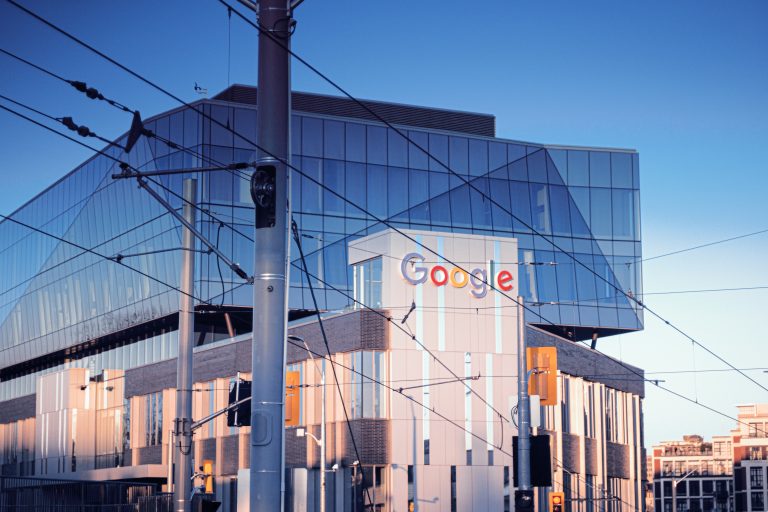What You Need to Know About The Latest Google SEO Algorithm Updates
One of the hardest things about running a website is not necessarily the coding. Technological developments like click-and-drag website builders and no-code WordPress sites have made it easy for everyday people to run a simple blog or company website. On the other hand, simply building a website will not do your company much good unless people visit the site.
Furthermore, buying web traffic with pay-per-click campaigns gets expensive quickly. That’s why understanding the Google SEO algorithm is so important.
Unfortunately, understanding and keeping track of every Google SEO algorithm update can be difficult. It may even seem like Google is constantly changing the rules in order to confuse us. However, if you want your content to be read as much as possible, you need to keep track of any changes which may affect you. That’s in addition to carefully minding your keywords and making sure to optimize content for your intended audience.
With that in mind, let’s look at some of the recent Google SEO algorithm components that you need to consider as you optimize content.
How search engines work
Before we discuss the Google SEO algorithm and how it affects your position on the search engine results page (SERPs), let’s look at how search engines work in general. This will help you understand how the algorithm is so important and why Google is constantly fine-tuning it.
The ranking process starts long before your website shows up on the SERPs. That’s because Google must first read your site to see what’s on it. Google accomplishes this task using a web crawler called Googlebot. Essentially, what Googlebot does is discover and scan your content. It may do this naturally, such as when someone else links to your website. Or, you can submit your website to Google for Indexing. Frequently, submitting to Google is as easy as changing a setting in your website code.
Crawling your website is much easier if you submit a map of your site to Google. This map tells the bot exactly what to look for and where to find it. From here, the bot can analyze the text.
Finally, Google indexes and ranks each webpage. While nobody understands this process completely, the Google SEO algorithm is what determines a page’s position on the SERPs. In other words, the algorithm lets Google decide which sources are the best for a particular piece of information based on keywords.
Image Source: Ahrefs
Updates to Google’s algorithm you need to know about
It is unsurprising that Google consistently makes changes to its algorithm. After all, the Internet has evolved a lot over the past 30 years, and standards have changed. People who went to school in the early days of the Internet probably remember being told by their teachers to avoid Internet sources. Over time, the quality of content on the Internet increased, and now most people use the Internet quite heavily for research.
Each Google SEO algorithm update, combined with the trend toward publishing higher-quality material online, has contributed to this shift. But even for everyday activities, the Internet has become an invaluable resource. Nowadays, it’s much harder to get away with putting spam on the first page of the SERPs.
Here are some of the recent changes that have brought us a first-class experience on the web.
The Helpful Content update
Introduced in 2022, the Helpful Content update introduced a major change in the algorithm. As its name suggests, this update incentivizes content that is truly beneficial and helpful to the humans who read the pages. In other words, the idea behind the Helpful Content update is that content needs to be written so that it’s helpful to people rather than simply attractive to the web crawlers that power Google and other search engines.
Why is this important? Before this Google SEO algorithm update, content producers could easily earn a top ranking by artfully adding keywords to poorly-written content. Essentially, you could successfully burden top rankings by making your content so that it was easy for the machine to read, but humans wouldn’t find it helpful — or even worth reading. In other words, it was a major shift from machine-focused SEO to human-focused SEO.
The Page Experience update
Another problem that Google targeted in 2022 was poor user experience. If you’ve ever gone on to a webpage and felt like you couldn’t find anything, or that the page was loading very slowly, or experienced only a block of text, then you understand what this Google SEO algorithm change was all about.
With the Page Experience update, Google considers your reader’s user experience. While you don’t necessarily get extra points for a user-friendly site, optimizing the user experience will help your website perform better for the same keyword than a similar page that runs poorly. To that end, you should consider certain elements like fast page load speed, a table of contents, and proper headings.
By following user experience best practices, you can let your content live up to its full potential.
Google Penguin
Remember when you could go through an entire page of Google search and not find much of value? This was a relatively frequent occurrence before the Google SEO algorithm incorporated the Penguin update back in 2012. Before Penguin, some website operators would use so-called “black hat” techniques. For example, they would fill their content with useless keywords, add spam links, and buy or trade backlinks.
The Google Penguin update cracked down on junk links in particular. These links were popular because pre-Penguin, they would drive traffic to a website so that the owners could make a lot of money on advertising. Unfortunately, the content on these sites was of very poor quality. Penguin elevated content standards on Google so that top-ranked websites were of high quality and delivered what people wanted.
Google Bert
If you’ve ever felt like the search engine doesn’t understand you or fails to identify what you want to know, you’re not alone. Many of us have gotten very good at rephrasing a Google query until the Google SEO algorithm understood what we wanted and served up the right content. Fortunately, we’ve had to do less of that since the end of 2019. That’s because the Bert Google algorithm update improved the search engines understanding of search intent.
What’s search intent? In a nutshell, search intent refers to what somebody wants when they enter a search into Google. For example, you might want a recipe for shepherd’s pie. To get that, you might look for “recipes that use mashed potatoes,” “shepherd’s pie recipe,” or even simply “shepherd’s pie”. When we ran all three searches, we received a recipe on the first page. Before Bert, we might’ve only found a list of potential dishes under the first search term but no recipes. Likewise, the last term might’ve also failed to produce recipes.
Google Hummingbird
Hummingbird is one of the earlier Google SEO algorithm changes. Years ago, it used to be that you could type in keywords and get a lot of random content that wasn’t really relevant to your query. And in this case, it went far beyond problems with search intent. Rather, a website owner could insert random keywords into their text and rank on the first page of Google.
Why was this possible? Originally, the Google SEO algorithm mostly matched keywords on a page to the keywords typed into the search bar. There was no meaningful filter to help determine whether or not the content was relevant or if it even matched the subject.
When Google Hummingbird was released, this all changed. Hummingbird changed the algorithm so that it would identify the basic topic. Then, a searcher would only get results that Google identified as relevant.
Additionally, it became much harder for a website owner to spam Google and get their contact served up on multiple unrelated SERPs. In turn, if your content isn’t something that people want to read, they probably won’t see it on Google. Quality, not quantity, became important.
Google Panda
An earlier attempt at eliminating spam in the Google SEO algorithm was Google Panda. In the bad old days, whoever was best at stuffing keywords would frequently rank the highest on Google. This led to SERPs being crowded with all kinds of low-quality content. Worse, the best content would often be harder to find.
Google Panda addressed these issues by introducing the EAT principle: Expertise, Authoritativeness, and Trustworthiness. In other words, it prioritizes content written by people who are experts in the field or at least have done adequate research to produce a high-quality article. Similarly, content from authoritative sources like universities, nonprofits, and governments automatically fare better than amateur or purely commercial content. And finally, content should be trustworthy, as opposed to being highly biased or fake.
For content creators, the lesson is simple — if you produce junk content, fake news, and spam, you won’t do as well. Similarly, your content should have plenty of information so that it delivers a lot of value to readers.
Link Spam Update
Another Google SEO algorithm update deals with spammy links. Google has specific rules which govern the role of links on web pages and helps determine which ones count toward your search engine ranking. The recent Link Spam update addresses this issue by ignoring links that violate Google’s standards. Technically, there are certain ways that you’re supposed to mark nonconforming links, and before this update, it was essentially on the honor system. Now, the algorithm is more sophisticated and will detect spam more easily.
Product Review Update
Most people know that product reviews provide important information to consumers and B2B decision-makers looking to make a purchase. For this reason, the quality of product reviews is very important — if reviews have poor-quality or misleading information, they are of little use and may even mislead the reader.
The Product Review Update is a recent change in the Google SEO algorithm that serves as quality control for certain reviews. Specifically, Google is targeting websites that publish product reviews as a major component of their content. In other words, this is they are not interested in quick customer reviews on e-commerce sites or local businesses.
Here, Google considers how thorough and well-informed your reviews are. Ideally, the writer should be someone who has tested the product before writing a review. They should talk about the strengths and weaknesses of a product and thoroughly discuss its features.
Google Core Algorithm Update
Late last year, a new Google SEO algorithm update came on the scene. Known as the Core Algorithm Update, it targets thin content and other low-quality material. Essentially, it’s advancement and fine-tuning of the older Helpful Content Update. Now, it’s much more difficult for lower-quality content to slip through the cracks and rank at the top of the SERPs.
Fortunately, it’s relatively easy to avoid getting in trouble with the core Algorithm Update. So long as you write high-quality content, you don’t have much to worry about. On the other hand, if you’re only trying to sell something, then you may have problems.
Final Thoughts
As a website owner, it may seem like the Google SEO algorithm controls your life. After all, the higher your website ranks on the SERPs, the more organic traffic you’ll receive. And for this reason, you must make sure that you keep track of algorithm changes and best practices. Ultimately, the amount of traffic you get from Google will have a significant effect on your business and its ability to make sales. This is even more true if you have an e-commerce brand or make a lot of sales online.
Fortunately, you don’t have to do everything by yourself. A highly qualified SEO content writer can help you stay ahead of the crowd no matter what the next Google algorithm update brings. Best of all, you can focus on running your business rather than writing content that may not put your business’s best foot forward.
Better yet, you don’t have to hire a content writer yourself. Here at WriterArmy, we know SEO and the latest best practices to maximize your success. We also employ content strategists and others who can help you pick the best keywords and topics for your latest content. Then, we’ll engage our writers to create the content so you don’t have to. It’s a worry-free way to get ahead and stay ahead. Then, you can focus on running your business. Contact us today for a free consultation.








